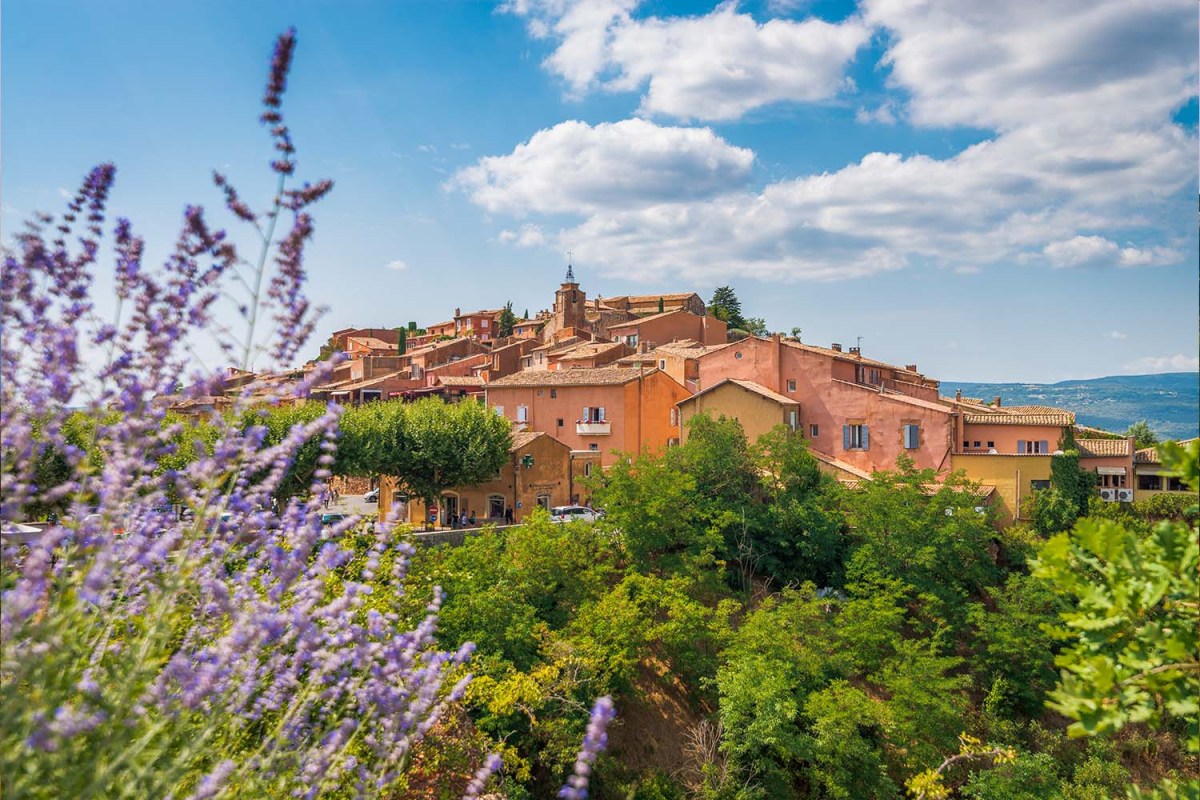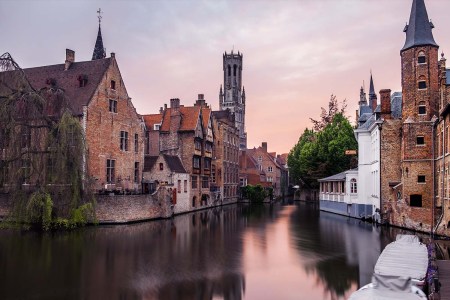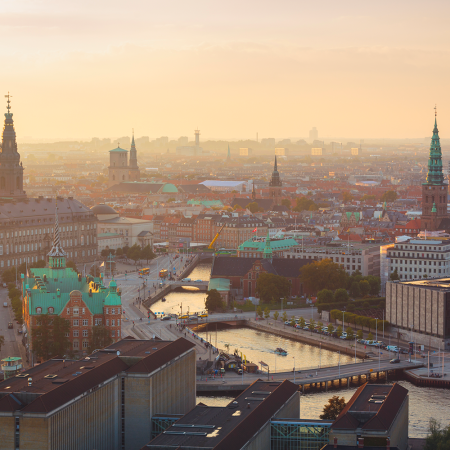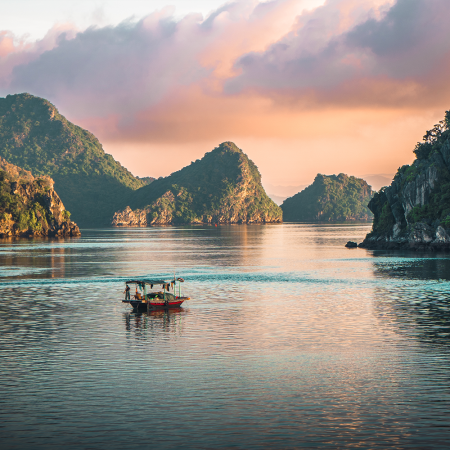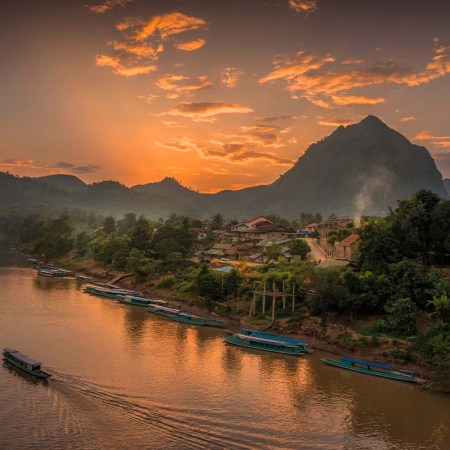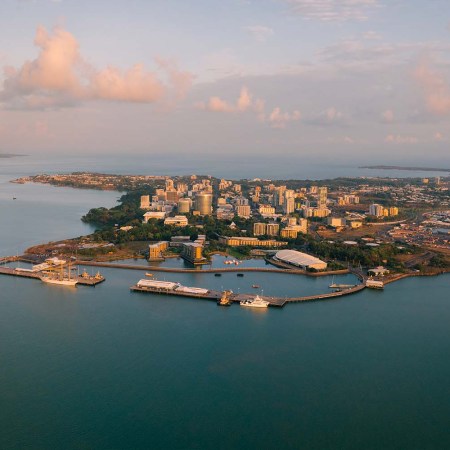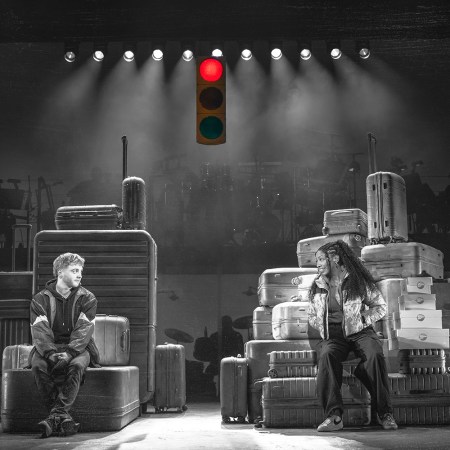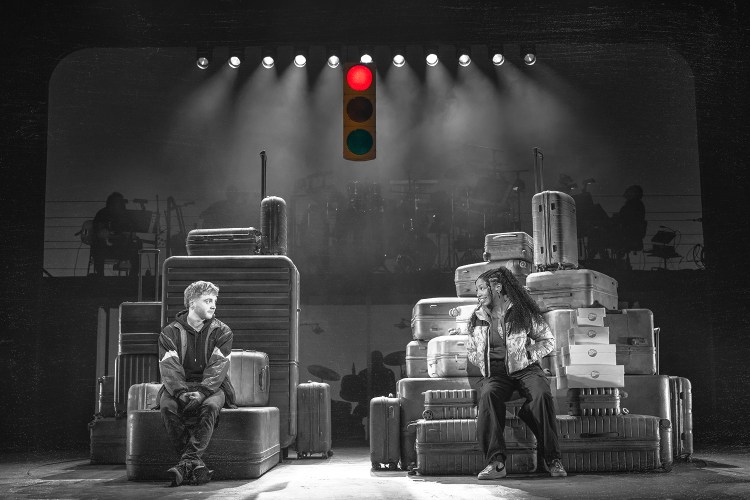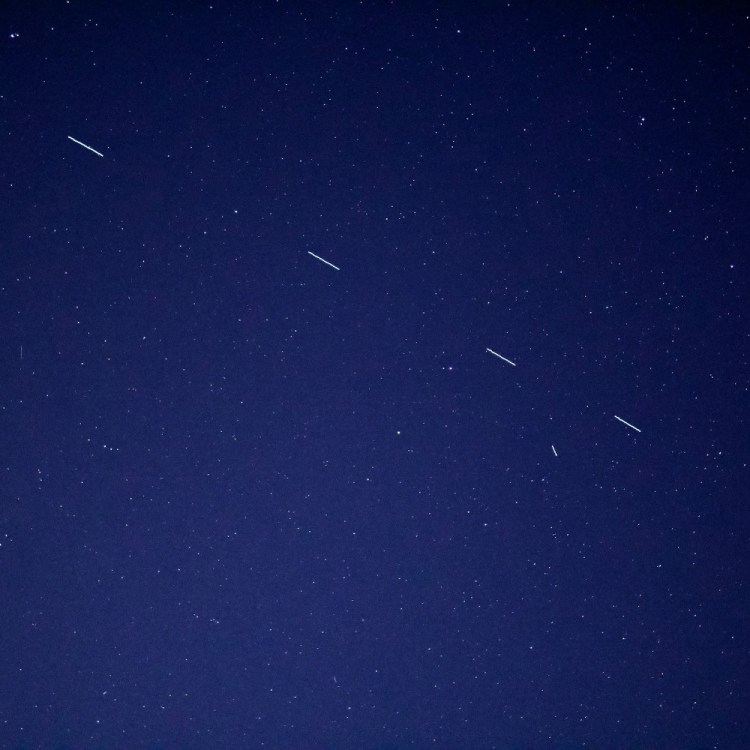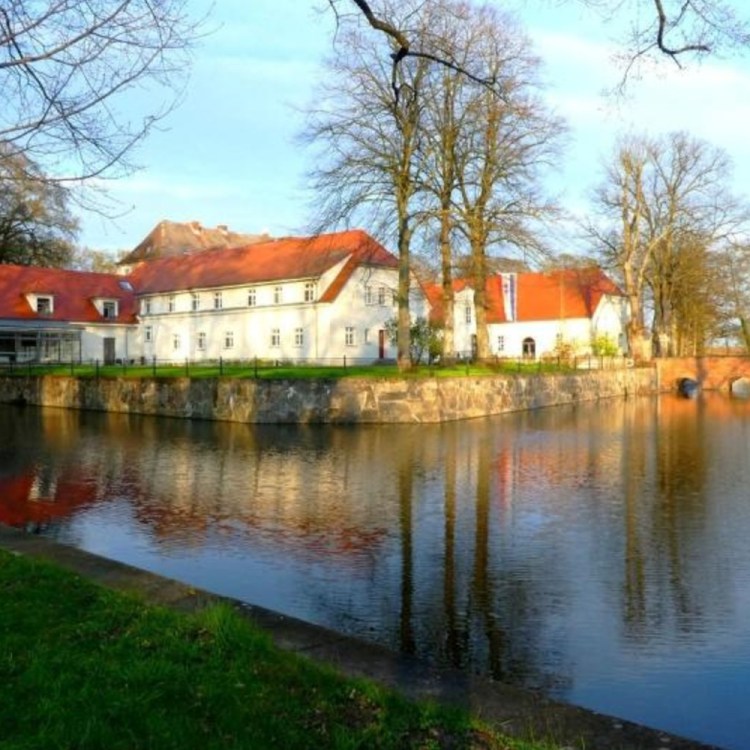Summer in Provence sparks images of impossibly chic jet setters traipsing through glamorous French Riviera beach towns like Saint-Tropez. The Luberon — as a frame of reference, it’s basically everything between Avignon and Aix-en-Provence — shows off a more pastoral side of the South of France with lavender fields, olive groves and vineyards. Its historic hilltop villages give visitors an enchanting and enduring glimpse at the past. There are also famous markets and hiking trails through protected parkland. Despite its low-key status, the region also has very well-heeled hotels.
While some European travelers happily spend a month or more sipping perfectly chilled rosé and staring out at the bucolic scenery in the Luberon, most U.S. tourists don’t have that luxury. Luckily, you can cover a lot of idyllic ground — and still have ample time to relax and soak in the peaceful atmosphere — in just seven days.
How to Get to the Luberon
Let’s just assume you’re coming from Paris because that’s the arrival point for most international travelers. From Paris Gare de Lyon, just hop on the train to Avignon TGV. The trek takes approximately two hours and 45 minutes. There’s a Europcar steps from the platform, so it’s easy to pick up a rental and hit the road. Before journeying onto the Luberon, I would highly recommend stopping in Avignon to stand in awe of the staggering Palais des Papes in the city center. Alternatively, you could fly into Marseille and drive or take the train.
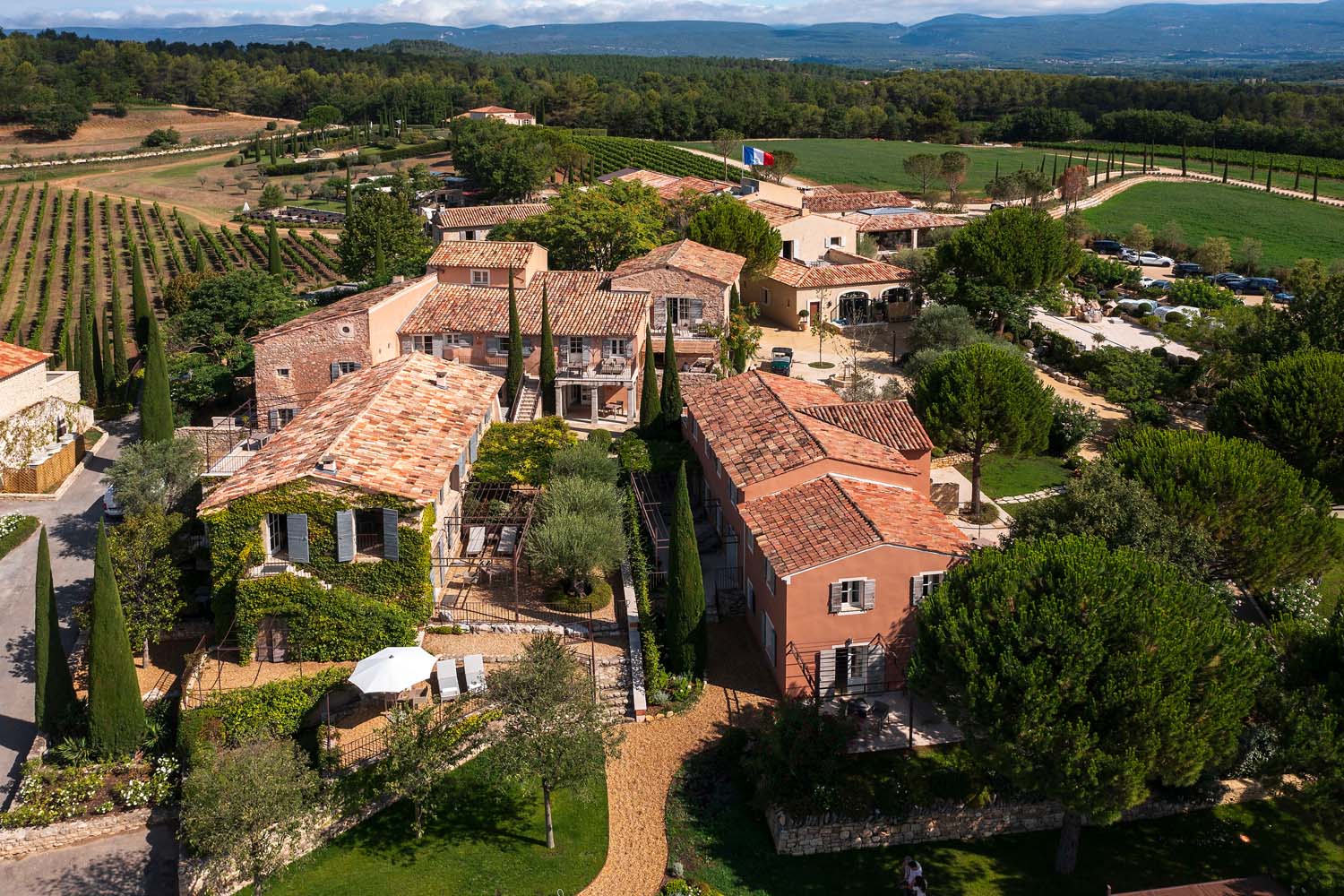
Day 1:

Do: Roussillon
Grab your camera and head to Roussillon, a beautiful Luberon village at the foot of the Monts de Vaucluse known for its ochre deposits, colorful cliffs and sweeping countryside views. Many of the buildings are painted in shades of red, yellow and brown that match the earth and beautifully contrast the leafy landscape. A requisite photo op — and one that’s virtually impossible to miss — Le Sentier des Ocres is a former ochre quarry with walking paths.

Eat: Restaurant David
Restaurant David at Le Clos de la Glycine has a Michelin star and a “return from the market” tasting menu that spotlights fresh, regional products. The ambiance and vistas are sublime. While savoring Mediterranean turbot in a crustacean broth and admiring the rust-hued ochres, you may have a pinch me a moment. Lean into that feeling. Let the food and wine feed your soul.

Do: Lacoste
A pint-sized village with loads of creative valor, Lacoste shouldn’t be passed over. The prolific writer Donatien Alphonse François, Marquis de Sade lived in Château de Lacoste back in the 18th century. Today, it’s the primary tourist attraction. Travelers visiting Lacoste for the first time will also be surprised to learn that many of its historic buildings serve as housing, workshops and galleries for SCAAD students.

Stay: Coquillade Provence Resort & Spa
Coquillade Provence Resort & Spa genuinely looks like a travel brochure for the Luberon come to life. Lavender and fragrant pine trees line the entrance. It has multiple pools for cooling off during sun-baked summer months. Guests shack up in rooms and suites inside stone houses and fall asleep to the sounds of cicadas. The on-site Aureto Winery also hosts guided tours and tastings. With multiple restaurants and an unparalleled spa, you’ll never want to leave. (I say this from personal experience.)
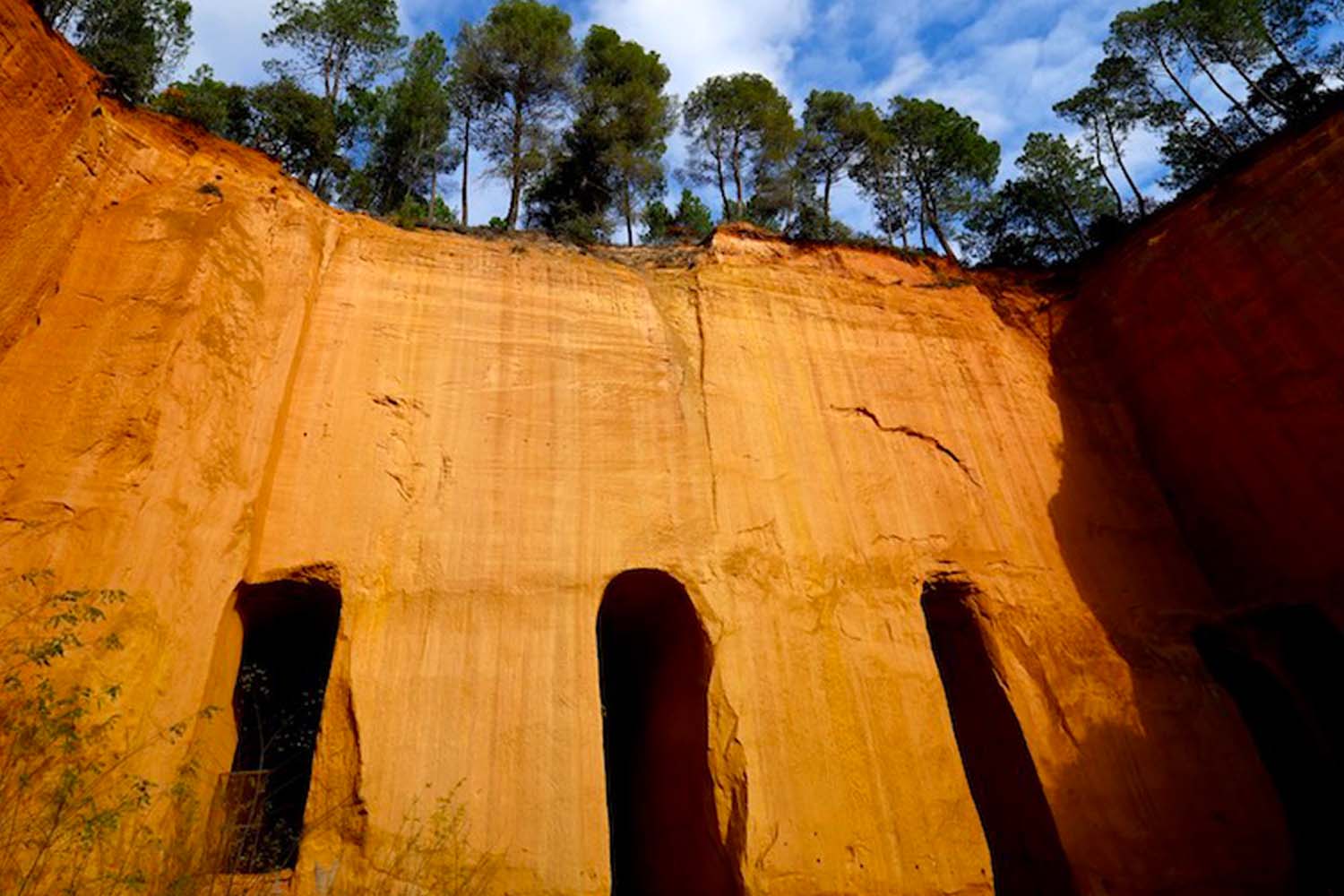
Day 2:

Do: Goult
An unspoiled gem without the name recognition of Gordes or Roussillon, Goult gives visitors something money can’t buy: authenticity. It’s a charming and cheerful place to wander around, snap a few photos of the old facades with sun-faded shutters and climbing vines. Grab some ice cream. Oh, and don’t forget to stop by Chateau de Goult.

Eat: La Terrasse
One of the great joys of a holiday in Provence? A leisurely lunch that stretches into the afternoon. La Terrasse is an adorable spot in the middle of Goult to luxuriate over gnocchi with sage butter and a glass of crisp white wine. Every now and again, you might hear the convivial chants of locals tossing back a pint at the pub a few doors down.

Do: Mines Bruoux
Doing a guided tour of Mines Bruoux, a fascinating labyrinthine complex of tunnels and galleries in an old ochre mine is a really unique only-in-the-Luberon experience that draws more than nearly 37,500 tourists each season. Since the underground temp always hovers around 50°F, it’s also a pleasant place to escape the peak afternoon Provence sun.
Pro tip: reserve tickets in advance, wear closed-toe shoes and bring along an extra layer.

Relax: Coquillade Provence Resort & Spa
Topping the list of heavenly highlights at Coquillade Provence Resort & Spa, the 21,527-square-foot wellness sanctuary embraces head-to-toe well-being with 13 treatment cabins, Kneipp pools, a sauna, a hammam, an ice fountain, a sensory shower, a heated indoor pool, outdoor jacuzzis, relaxation areas and a state-of-the-art fitness center. Facials use either Biologique Recherche or Tata Harper. Massages, body scrubs and manicures are on the menu, too.
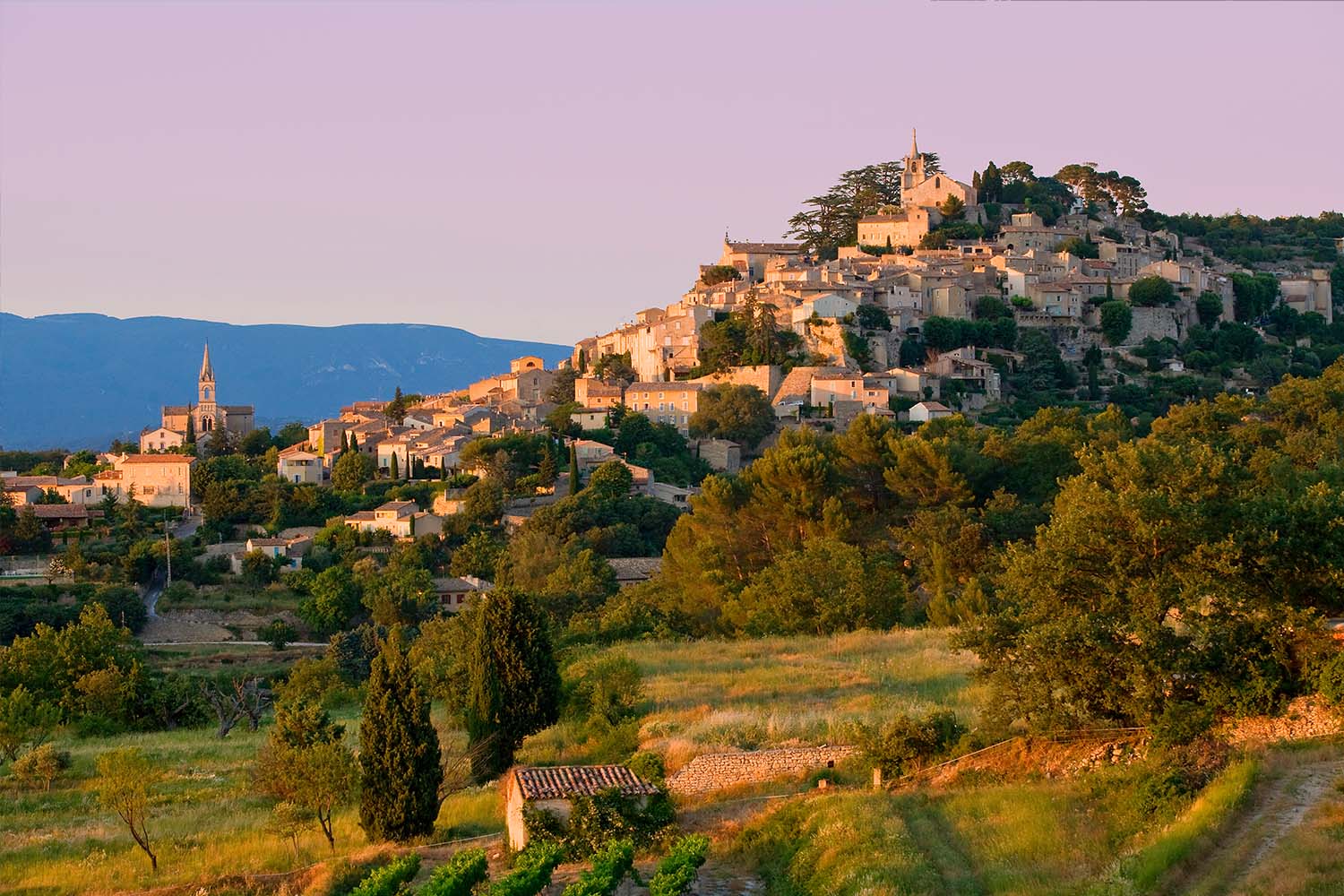
Day 3:

Do: Luberon Regional Natural Park
Chances are by day three you’ve already explored part of Luberon Regional Natural Park without even realizing it. That’s because this enormous protected area covers 165,000 hectares. But, now it’s officially time to trade breezy linens for something on the more active side of the apparel spectrum and give the spellbinding landscape some dedicated A.M. time. While you don’t have to wear hiking boots (just comfy shoes) for a casual walk through the wilderness, that might not be the case for folks aiming to conquer the Mourre Nègre loop trail. Either way, sunscreen, a hat and plenty of water are musts.

Eat: Casa Bonilis
Refuel from all that outdoor adventure with a plate of pasta from Casa Bonilis. At this Italian cucina (yes, it’s going to be a departure from Provencal cuisine but I promise it’s worth it) and wine bar in Bonnieux, it’s all about scratch-made dishes and sips that pair oh so well. The combination of delicious food, warm service and a cozy vibe just makes it the perfect place for a leisurely mid-day meal. It’s also delightful for dinner and sometimes brings in live music in the evenings.

Do: Bonnieux
Bonnieux has a lot to offer travelers, including plenty of restaurants (though, you’re likely full from lunch at Casa Bonilis — so maybe just bank that information for later), cafes, shops, a bakery museum and a botanical garden. After ambling around the beautiful town, head to Forêt des Cèdres du Luberon to clock even more steps while appreciating the shade-giving tall cedars and vast views through the trees.

Stay: Le Phébus & Spa
Le Phébus & Spa enchants everyone who visits. This postcard-worthy Relais & Chateaux property feels like a dream with 30 refined rooms and suites, plus an exclusive villa called Les Anges, a standout spa with lavender-infused salt scrubs, a swimming pool and a gastronomic restaurant that defies expectation.

Day 4:

Do: Oppède le Vieux
One of my favorite villages in the Luberon, Oppède le Vieux preserves a way of life that’s long past. Built atop a rocky prominence and ringed by greenery, it resembles a film set from a period piece. The uneven stone pathways and steps wind up the hill. Around each corner, medieval homes, workshops and churches — some in various degrees of resplendent ruin, others dexterously restored.

Eat: Café du Progrès
The perfect spot for a laid-back lunch with gourmet flair that feels down-to-earth and authentic rather than fussy, Café du Progrès occupies a wooden deck-covered corner of the street in Ménerbes. This self-proclaimed “village bistro” remains a favored stopover for cyclists enjoying a delicious rest between long-distance rides in the region as well as locals and tourists seeking a palette-pleasing mid-day meal. Order whatever specials on the board sound most appealing.

Do: Ménerbes
Peter Mayle wrote “A Year in Provence” while in Menerbes, which put this longtime artist enclave on the tourist radar. But the medieval village itself remains unchanged by its literary prestige. Visitors will still find quaint streets lined with stone facades, a sense of quietude and vineyards views. The imposing citadelle and Dora Maar House, which Picasso purchased for his mistress, are just a couple of the things to point a lens at around this unassuming little town.

Sip: Domaine de La Citadelle
You don’t have to search far to find palate-pleasing pours in Provence. Perched on the northern slope of the famous Luberon Massif, Domaine de La Citadelle prides itself on producing high-quality, certified organic red, white and rosé. There’s also a botanical garden. Those interested in wine-related things — beyond just sipping — should check out the private collection of more than 1,000 corkscrews at Musée du Tire-Bouchon.
The Perfect Belgium 7-Day Itinerary
Eat and drink your way through the unsung hero of Western Europe.
Day 4:

Do: Gordes
While it’s nearly impossible to crown the most photogenic place in the Luberon, Gordes comes pretty darn close. My friend who lives locally once compared it to Disneyland. Honestly, I see the similarities. Both places are mesmerizing in a way that feels constructed to inspire happiness. While the famous village in Provence predates an intent for tourism purposes, nonetheless, it’s an utterly magical place filled with narrow cobbled lanes, white stone buildings, churches and pastoral sightlines. As one of the most popular destinations in the area, Gordes gets super busy in the summer months, so it’s best to head over early to beat the crowds.

Eat: Restaurant L’Outsider
Navigating the winding pathways and wielding your camera in the air to snap a photo without other tourists is bound to make anyone hungry. Sit down for a meal filled with traditional Provencale flavors at Restaurant L’Outsider. Again, I can’t overstate the number of people that descend upon Gordes in the warm months. Please do yourself a favor and make a reservation well in advance.

Do: Abbaye Notre-Dame de Sénanque
Founded in 1148 by Cistercians monks, the Abbaye Notre-Dame de Sénanque remains an active monastery centuries later — only now, it’s also a major attraction. Visitors can do a guided tour of the church and cloisters. In the summer months, the fields erupt in a bloom of fragrant lavender creating one of the most iconic visuals in the Luberon, err all of France. The afternoon light is particularly beguiling. Though, to be clear, it’s just as dreamy first thing in the morning. I would just personally go post-lunch to stretch my legs and extricate myself from the masses in Gordes.

Stay: Airelles Gordes, La Bastide
After exploring one of the most captivating (and crowded) destinations in Provence, return to the refined comforts and relaxing atmosphere of Airelles Gordes, La Bastide, a high-end hilltop hideaway on the edge of Gordes. In need of R&R of the pampering variety? The exquisite spa treats guests to a range of facials, massages and phyto-aromatic body treatments. Indulge in the simple pleasure of a slow, satiating meal at L’Orangerie. Maybe even splurge on a one-bedroom terrace suite swathed in 18th-century French grandeur with pine-worthy panormas.
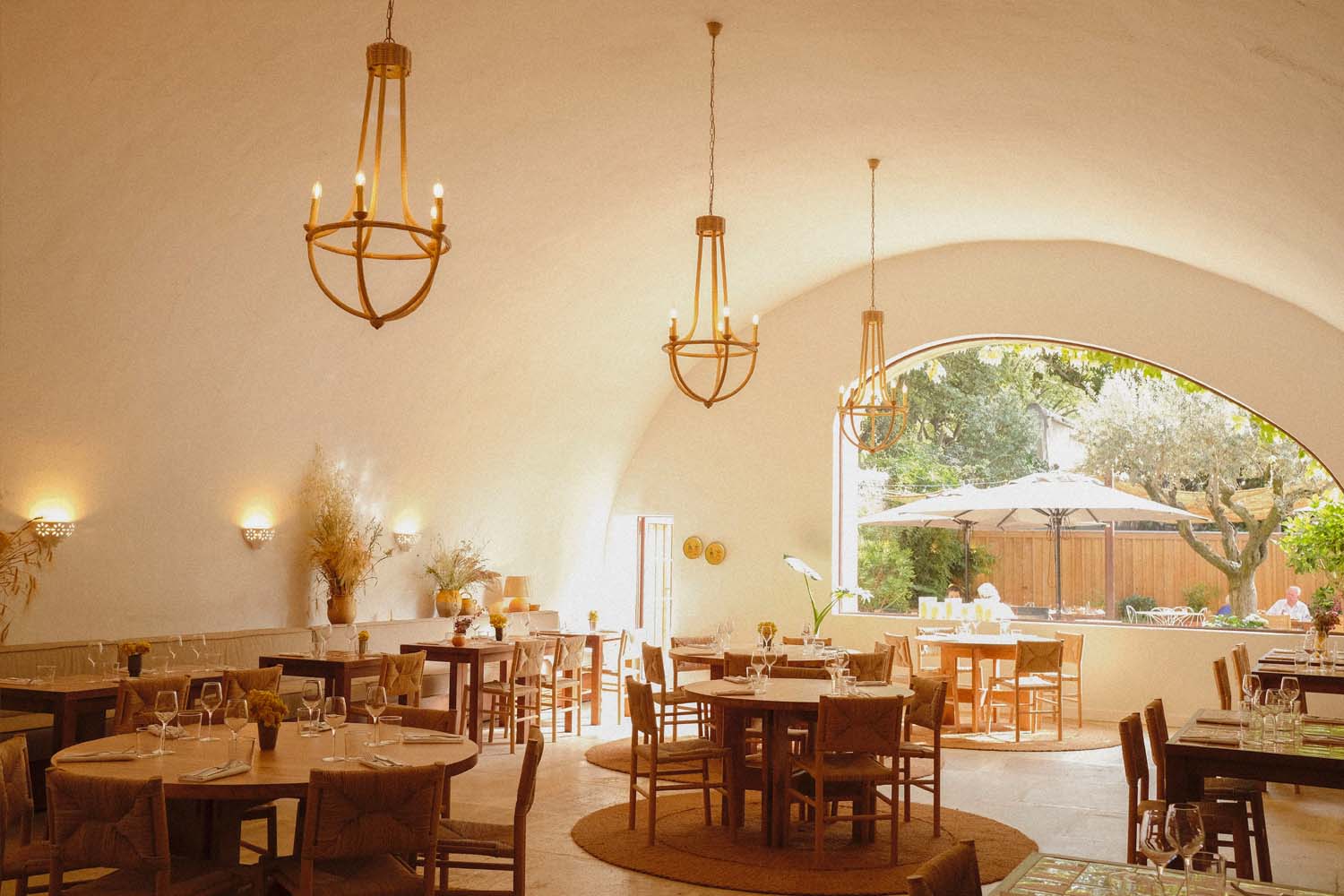
Day 5:

Do: Marché de Lourmarin
Let’s just assume it’s Friday because that’s when the market takes hold of Lourmarin. A literal feast for the senses, the stalls that run along the tree-lined promenade and the square above it brim with all sorts of typical Provencal products — fresh-baked baguettes, local cheese, honey, juicy stone fruit, olives and more.

Eat: Restaurant du Moulin
On a side street, opposite Château de Lourmarin sits an old mill turned hotel called Le Moulin. It’s hard to miss the stone facade and locals drinking coffee and wine outside on the sidewalk terrace. Inside, the cavernous dining room of the Restaurant du Moulin appointed with wood tables, ceramics and oversized light fixtures sets the tone for the artful plates of contemporary Provencale cuisine that come out of the kitchen. The garden patio in the back makes the choice of whether to dine indoors or outdoors nearly impossible.

Do: Lourmarin
While the famous weekly market ranks as a high point, it’s far from the only thing to do in Lourmarin. There are many art galleries, sidewalk cafes if you want to grab a cup of coffee or a nibble and chic boutiques (I bought a beautiful handmade hat at Panama By Ophelia). Its most fabled attraction, Château de Lourmarin is a dazzling example of a dominating Renaissance castle.

Eat: Le Champ des Lunes
The Michelin-starred restaurant at Domaine de Fontenille, Le Champ des Lunes is a gastronomic powerhouse that exudes a joyful sense of place. The menu changes based on the availability of fresh ingredients. In the summer, diners might anticipate having their tastebuds tantalized with lavender olive oil-drizzled Mediterranean fish, confit lamb and hazelnut-crusted guinea fowl — and a black truffle supplement that’s well worth the price tag. Not surprisingly, reservations are essential during peak season.
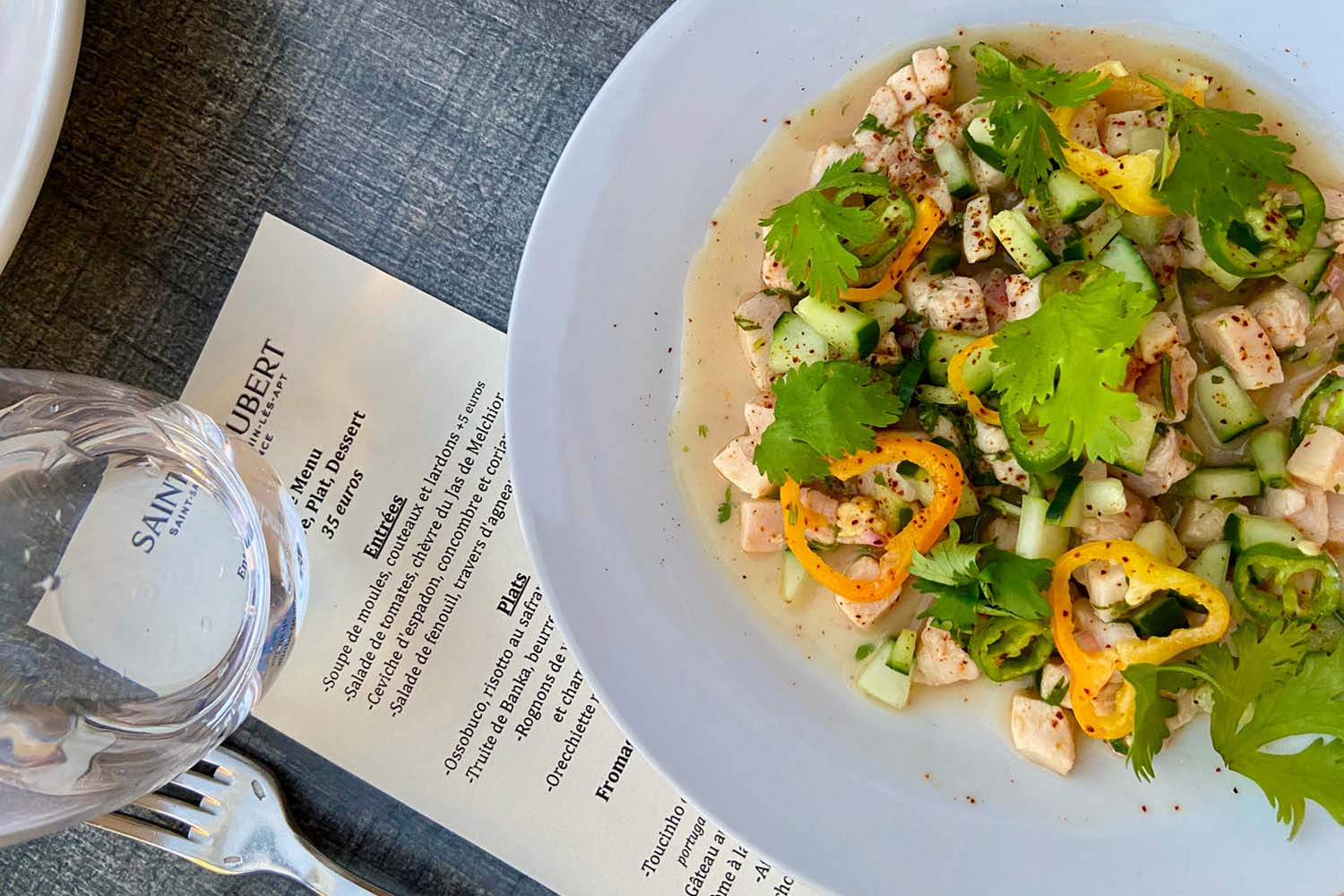
Day 6:

Do: Falaise de la Madeleine
Strike out early to have the path up to the top of Falaise de la Madeleine to yourself (and temps more conducive to hiking). The circular — at times, mistral swept — the route takes just shy of three hours to complete. Along the way, trekkers are met with wondrous wide-ranging lavender fields, dramatic limestone and lush vegetation.

Eat: Le Saint Hubert
When two alums of École Grégoire-Ferrandi in Paris set up shop in Saint-Saturnin-lès-Apt, people had high hopes — all of which were met by Le Saint Hubert. The all-day eatery serves incredible food made with locally sourced, seasonal ingredients and natural wine in a warm, unpretentious setting with spellbinding views.

Do: Saint-Saturnin-lès-Apt
Positioned on the southern slope of the Vaucluse Mountains, Saint-Saturnin-lès-Apt is a stunning and sizable (by Luberon standards) village with all the old-world charisma you’d anticipate. Its pastel-painted shutters, stone fountains and ecclesiastical buildings make a strong case for just ambling. Be sure to carve out some time to see the pair of 17th-century windmills and a storybook château that overlooks the verdant valley.

Eat: La Table at Perréal
La Table is the gastronomic restaurant at Perréal, a small stone-built hotel located between Gargas and Saint-Saturnin-lès-Apt. The menu celebrates seasonality. And the environs stay very much on theme with terrace seating, green lawns and a scenic outlook. It’s an equally superb spot for an aperitif, especially since Domaine Perréal produces rosé and yuzu liqueur that goes down a bit too easily.

Day 7:

Do: Saint-Rémy-de-Provence
Saint-Rémy-de-Provence rarely makes headlines these days. And, that’s sort of the point. This small Luberon town exists in a really beautiful, timeless way. Vestiges of the past are all around. Picturesque old homes that must have fascinating stories to tell line the winding streets. Musée Estrine, a 1749-built private mansion turned museum displays temporary and permanent collections. The on-site Centre of Interpretation of Vincent van Gogh chronicles the contributions of the tormented Dutch master (more on his connection to the town in a minute). Bubbling fountains, eateries with outdoor terraces, art galleries and shops that sell straw baskets add to the distinctive Provencal charm of it all.

Eat: L’Auberge de Saint-Rémy
Helmed by chef Fanny Rey and her partner, dessert dynamo Jonathan Wahid, L’Auberge de Saint-Rémy is an elegant Michelin-starred restaurant set in a 15th-century building. Thus, it wins in both the historic and heavenly gourmet departments. It’s really special to finish such a brilliant savory meal where many ingredients come from the vegetable garden with something so seductive as sun-riped figs.

Do: Monastery Saint-Paul de Mausole and Site Archéologique de Glanum
With so much happening in and around Saint-Rémy-de-Provence, it’s best to retain that vacation pace by breaking it up. Perhaps you already knew that Vincent Van Gogh painted “The Starry Night” while gazing out from the window of his asylum in Saint-Rémy. Well, that place is called Monastery Saint-Paul de Mausole and it’s about 20 minutes outside of the center of town. Archaeology lovers (and really anyone with a general interest in the topic) should visit the nearby Site Archéologique de Glanum. Named after the Celtic god Glanis, it features the impressive remains of both Gaulish and Roman settlements.

Stay: Le Château des Alpilles
Some places have the ability to turn head at first glance. Le Château des Alpilles certainly falls into that category. Situated at the end of a road that’s flanked by 300-year-old trees just outside of Saint-Rémy-de-Provence, this 19th-century manor house hotel isn’t just a pretty spot to stay with brocade-draped bedrooms, but also one with gracious hospitality as well as a restaurant, bar and pool. And because the property covers seven hectares, it really immerses guests in the majesty of nature — which is such a meaningful part of a trip to the Luberon.
This article appeared in an InsideHook newsletter. Sign up for free to get more on travel, wellness, style, drinking, and culture.
